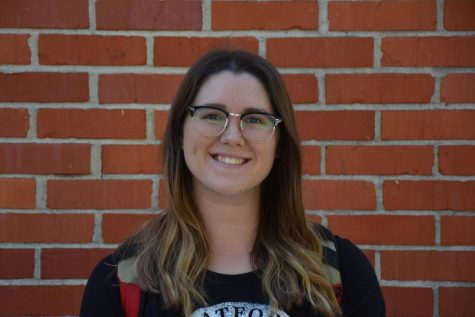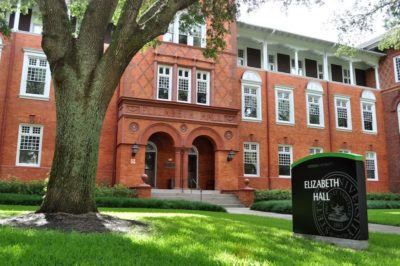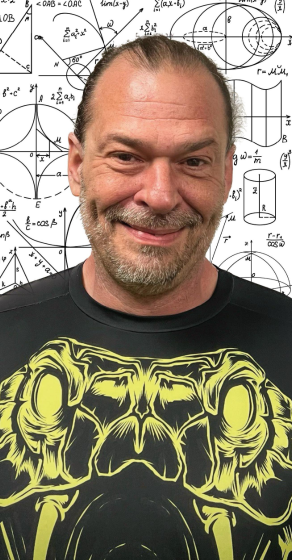Stetson University Choral Festival
The palpable excitement expressed itself in the line of parents, students, and friends, that stretched from the balcony doors all the way downstairs. A line began to form almost an hour before the concert began, signaling the dedication and pride those attending took in support of their respective performer. One proud father carried flowers, another held a card. The formal attire of the adults suggested a post-performance celebration.
Once the doors opened, the gathering rushed inside. Quickly there became no open seating in the balcony area. In an attempt to pass the dragging time, the west balcony– through heavy signaling and gesturing– began a wave that flowed through the entire second floor audience, but was mostly ignored by those attending below. Viewers also tried desperately to catch the attention of specific friends or performers below, though often to no avail. After waiting for what felt like days, the lights flickered to signal the beginning of the event. As the high school music directors entered the stage, various excitement and cheers rang out through the audience from their students.
Timothy Peter, Ph.D started with a gracious welcome and a reminder to silence cell phones, but allowed the show begin as soon as possible. The pieces by the music directors and some students were rich with complexity and meaning. The parts connected at times, and at other times complemented each other. Both pieces evoked sentiments of hope and unity.
From there, the Stetson Opera Theatre Workshop began. Despite the relatively young ages of the performers, their talent was immense. The skill of their breath control as well as command of voice were well beyond their years. The viewers watched, captivated by the mesmerizing vocals. The performers included Adam Benton, a duet by Vanessa Moya and Colby Harter, and ended with Kat Kirby-Kopczynski doing justice to a particularly well-known piece.
The Stetson Men had their time to shine following the opera singers. Their selections of songs, split between foreign languages and english, were full of moving parts that emphasized the sections of the choir. With black suits and green bow ties, the Stetson Men had the appearance of professional singers, and sang like them as well.
Last was the Women’s Chorale. Their songs were full of happiness and love, and their faces and body language reflected that joy. The conductor, Andrew Larson, informed the audience about the excessive voice groups making up the Chorale, as the soprano section and alto section had four parts each. This kind of division allowed for a rolling and intricate flow between the variety of sounds.
This festival appeared to be a huge milestone for the singing groups, as something they had been looking forward to and practicing for a long time. With the sound of thunderous applause to conclude the concert, it was assured that the night was a success.







